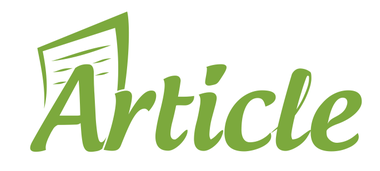
Things To Keep In Mind When You Are Looking For Labelling Of Prepackaged Foods
Prepackaged foods can be a great way to save money, but it is important to be aware of your state’s labelling laws before buying them. Here are some tips for ensuring that you are following the law when it comes to the labelling of prepackaged foods.
Reading the ingredients
It is important to read the ingredients label when looking for prepackaged foods. This will help ensure you get the best food for your body.
Some of the ingredients in prepackaged food may be unhealthy or dangerous. For example, some prepackaged foods may contain high levels of sugar or unhealthy fats. If you want to avoid these types of ingredients, it is important to read the entire label before buying.
It is also important to remember that prepackaged foods may have been preserved in ways that can harm your health. For example, preservatives may be used in prepackaged foods to keep them safe and edible for longer. These chemicals can have negative effects on your body if they are consumed in large amounts. It is always important to read the ingredients label and understand what is in the food you buy.
Avoiding food allergens
When you are looking for food packaging labels, it is important to avoid food allergens. Avoiding food allergens will help ensure you do not have any food allergies.
Some common food allergens include milk, eggs, peanuts, tree nuts, wheat, and soy. It is important to read the ingredients list on prepackaged food to see if it contains any of these allergens. If it does, avoid eating it.
If you have a food allergy, it is important to know what foods to avoid. Some of the most common foods people with food allergies should avoid include milk products, eggs, peanuts, tree nuts, wheat, soy products, and shellfish. In addition, some people with food allergies should avoid nightshade vegetables (such as tomatoes), which can cause severe reactions.
Checking for GMO labelling
When you are looking for prepackaged foods, be sure to check for GMO labelling. This is especially important if you are concerned about your health.
Many prepackaged foods have been labelled with the dreaded “GMO” label. This label indicates that the food contains genetically modified organisms. GMOs are controversial because they are believed to cause adverse effects on human health. Some people are particularly concerned about GMOs because they believe that they may cause cancer.
If you want to avoid GMOs, check the prepackaged foods’ labels. Many of them contain labels that indicate whether they contain GMOs or not. If you can’t find labelled food, it is probably safe to assume it contains GMOs.
Check for country of origin labelling.
When you are looking for the labelling of prepackaged foods, make sure to check for country of origin labelling. This information will help you determine whether the food was made in a country with poor working conditions or human rights violations.
Some common country of origin labelling that you may see on prepackaged foods include “made in the USA,” “made in Canada,” and “made in Mexico.” However, other countries produce prepackaged foods as well. For example, prepackaged goods from Thailand may have the country of origin label “made in Thailand.”
It is important to check for country of origin labelling on prepackaged foods because it can help you avoid buying food produced in a negative environment. Knowing where the food was made, you can make more informed decisions about your purchasing habits.
Checking for sugar content and other hidden sugar additives
When you are looking for food labels, be sure to check for sugar content and other hidden sugar additives.
One of the most common ways food companies add sugar to their products is by using hidden sugar additives. These additives are often difficult to see, but they can affect how your body metabolizes the sugar in the food.
Some of the most common hidden sugar additives include maltodextrin, dextrose, maltitol, and fructose. These additives can increase blood sugar levels and lead to weight gain over time. If you are trying to reduce your sugar intake, check all the ingredients in prepackaged foods before you buy them.
Checking for sodium labelling
If you are looking for food labelled “low-sodium,” keep in mind that there are a few things to watch out for. First, make sure to check the ingredient list. Many prepackaged foods that are labelled as low-sodium contain sodium in disguise. For example, many brands of prepackaged soup contain hidden salt in the form of canned broth.
Another thing to watch for is the sodium content of the food itself. Most prepackaged foods have a list of ingredients on the front of the package. If you see something like “salt” or “sodium,” make sure to read the list carefully and look for items that might contain a lot of sodium.
Finally, always ask the store clerk how much salt is in a particular product. Sometimes store clerks will be more than happy to estimate how much salt is in a product.
Checking for saturated fat content
When looking for prepackaged foods, it is important to keep the saturated fat content in mind. Many prepackaged foods have high saturation fat levels, which can increase your risk of heart disease.
You can look at the nutrition label to find out the saturated fat content of prepackaged food. The Nutrition Facts panel will list the saturated fat content and other nutrients and ingredients. You can also use the Health Canada online tool to find out the saturated fat level of a specific food.
If you want to reduce your saturated fat intake, it is important to read the labels of all packaged foods. Some simple steps that you can take to reduce your saturated fat intake include choosing low-saturated fat dairy products, limiting your intake of processed foods, and avoiding high-saturated fat foods.
Checking for artificial colours and flavours
When you are looking for the labelling of prepackaged foods, be sure to check for artificial colours and flavours. These chemicals can be harmful if ingested in high amounts.
Another thing to keep in mind when looking for prepackaged foods is to ensure that the ingredients are properly labelled. These foods often contain ingredients that consumers may not be aware of. By checking the ingredient list, you can ensure that you are taking advantage of all the food’s nutrients.
Finally, always read the nutrition facts label before purchasing prepackaged food. This information will tell you how many calories and grams of sugar are in the food. Knowing these numbers can help you make an informed decision about what to eat.
Checking for gluten-free labelling
When you are looking for gluten-free foods, the first thing you need to do is check the labelling. Many prepackaged foods contain gluten, but there are now gluten-free versions available.
Some main brands that make gluten-free foods include Heinz, GlaxoSmithKline, Unilever, and Nabisco. Most of these companies have dedicated gluten-free websites that will list all of their gluten-free products. You can also call the customer service number on the package and ask about specific products.
It is important to be vigilant when looking for gluten-free products. Many people with celiac disease cannot tolerate even small amounts of gluten. If you are unsure if a product is gluten-free, it is best to avoid it.
Conclusion
Prepackaged foods are convenient, but it is important to be aware of the essential oil labels stickers to get what you expect. Make sure the product has all the nutritional information listed, including the amount of sugar, sodium, and other unhealthy additives. Be wary of products with artificial flavours or colours – these can be harmful if overconsumed.


















